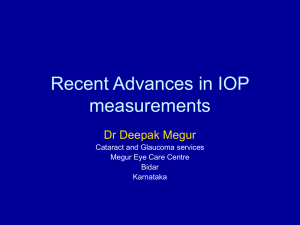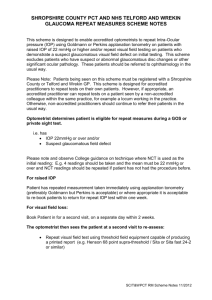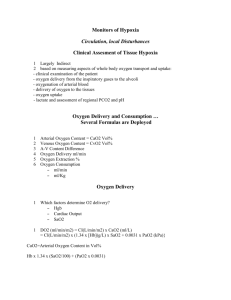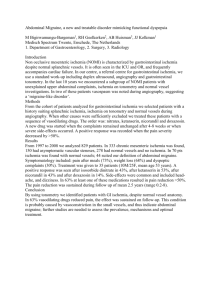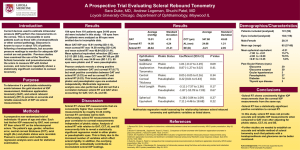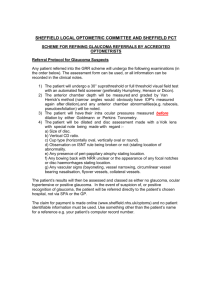Medical Instrumentation
advertisement
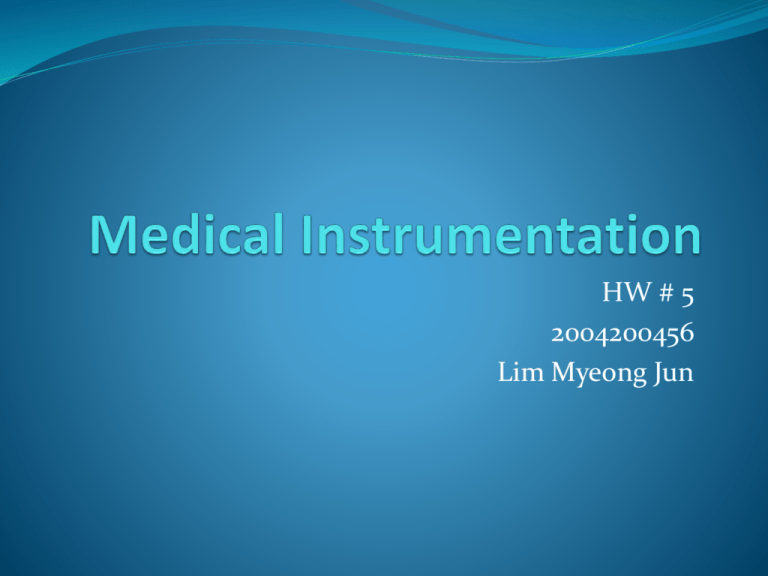
HW # 5 2004200456 Lim Myeong Jun Contents Outline of Chapter 7 Tonometry Non Invasive Measurement NIBP Matlab Exercise Reference Outline of Chapter 7 BP Invasive BP Non Invasive BP Tonometry Stethoscope Tonometry Tonometry? 1. Tonometry is the measurement of tension or pressure . 2. A tonometer is an instrument for measuring tension or pressure . In ophthalmology, tonometry is the procedure eye care professionals perform to determine the intraocular pressure (IOP), the fluid pressure inside the eye. It is an important test in the evaluation of patients with glaucoma. Most tonometers are calibrated to measure pressure in mmHg. Methods of Ophthalmotonometry Semicircles seen during Goldmann tonometry through slit lamp Applanation tonometry measures intraocular pressure either by the force required to flatten a constant area of the cornea (e.g. Goldmann tonometry) or by the area flattened by a constant force. Goldmann tonometry is considered to be the gold standard in tonometry as it is the most widely accepted method of determining intraocular pressure. However Goldmann tonometry is also an inherently imprecise measurement. Methods of Ophthalmotonometry In Applanation tonometry, a special calibrated sterile probe attached to a slit lamp biomicroscope is used to flatten part of the cornea. Because the probe makes contact with the cornea, a topical anesthetic, such as oxybuprocaine, tetracaine, alcaine, proxymetacaine or proparacaine is introduced onto the surface of the eye in the form of one or a few eye drops. A yellow fluorescein dye is used in conjunction with a cobalt blue filter to aid the examiner in determining the IOP. Perkins tonometer is a special type of portable applanation tonometer, which allows measurement of IOP in children, patients unable to cooperate for slit lamp exam, and in anesthetised patients. Methods of Ophthalmotonometry Pneumotonometry, also known as non-contact tonometry or air-puff tonometry, uses an instrument that senses deflections of the cornea in reaction to a puff of pressurized air. Although not considered to be the most accurate way to measure IOP, it is often used as a simple way to screen for high IOP. It is an easy way to test children. Because non-contact tonometry is accomplished without the instrument contacting the cornea the potential for disease transmission is reduced. Tonometry Mass P Mass P F = Mg Contact area : A Given by mass of Mass is M(Known), and contact area is A(measurable). Then we can calculate the pressure using this formula. Tonometry Blow air Air jet Photo sensor When the air jet blow air, part of the cornea is flatten. In the same time, the LED(Light Emitting Diode, Photo diode) emit light. Then the light receiving element(Photo transistor) receive the reflection light by part of the cornea(flat cornea). Photo sensor Epoxy resin Lens LED chip Bonding wire Lead frame Cathode Anode Photo Diode Emitter Collector Photo Transistor Non Invasive measurement The noninvasive auscultatory and oscillometric measurements are simpler and quicker than invasive measurements, require less expertise in fitting, have virtually no complications, and are less unpleasant and painful for the patient. However, noninvasive methods may yield somewhat lower accuracy and small systematic differences in numerical results. Non-invasive measurement methods are more commonly used for routine examinations and monitoring. NIBP NIBP(Non Invasive Blood Pressure) NIBP Pressure (mmHg) 120 (systol e) 80 (diastol e) The shape of blood pressure time We can measure the shape of blood pressure by IBP(Invasive Blood Pressure). NIBP measure only value of systolic pressure and diastolic pressure. NIBP Blue line is Cuff pressure. Red line is Blood pressure. -2~3 mmHg decrease Start Systolic pressure Diastolic pressure Finish NIBP Measured scale of Blood pressure Given by Vp = 40sin(2πt) + 80, f = 50Hz Systolic Pressure Diastolic Pressure Two side of signal is difficult to measure. Because we always measure original signal with noise. Oscillometric method The electronic version of this method is sometimes used in long-term measurements and general practice. It uses a sphygmomanometer cuff like the auscultatory method, but with an electronic pressure sensor (transducer) to observe cuff pressure oscillations, electronics to automatically interpret them, and automatic inflation and deflation of the cuff. The pressure sensor should be calibrated periodically to maintain accuracy. Reference http://www.ebme.co.uk/arts/tonometry/index.htm http://www.google.co.kr Thanks for your attention!!
